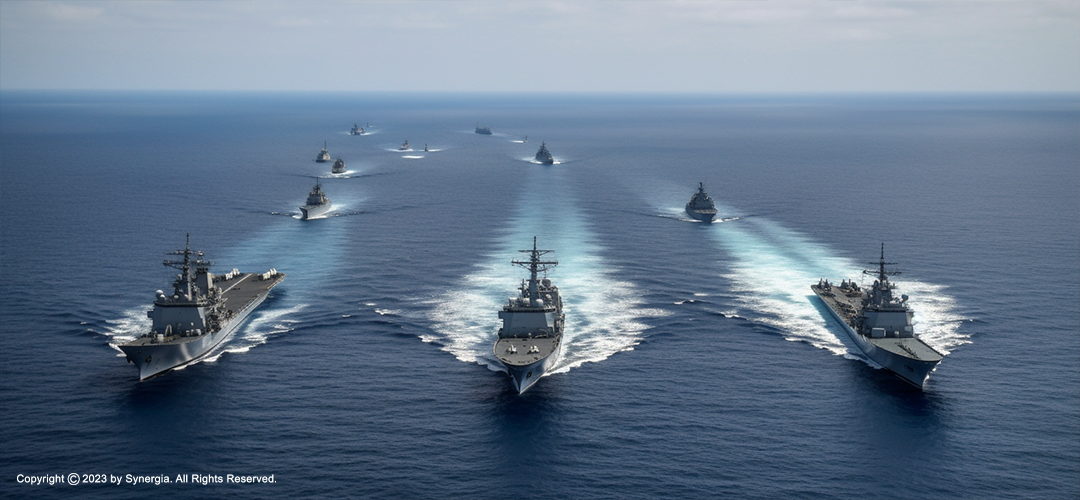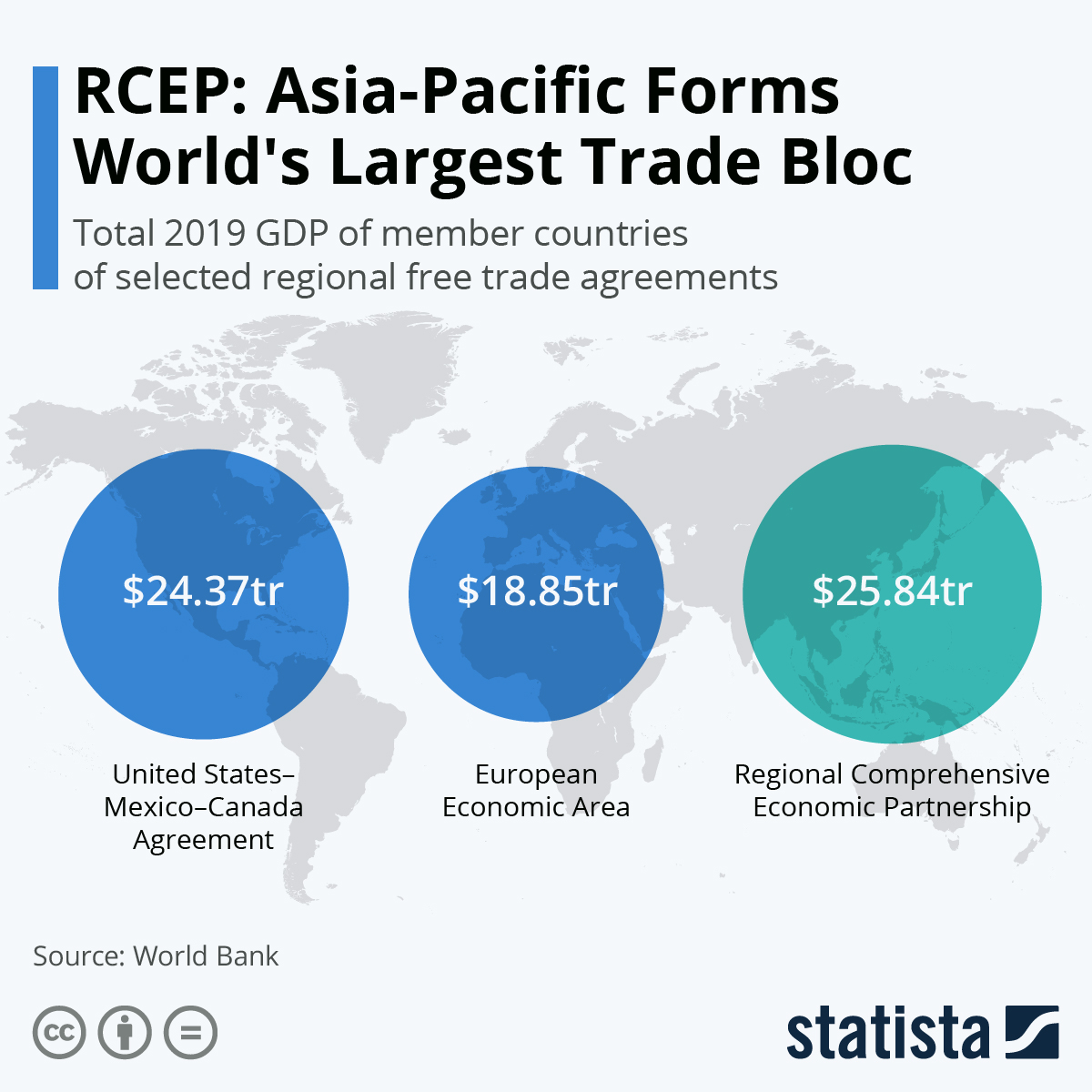U.S. and India: Strengthening the Alliance?
April 29, 2023 | Expert Insights

Today the Indo-Pacific region, which combines the Indian and the Pacific Oceans, is at the centre of global attention.
It has been placed at the core of the international geo-political competition between the United States and China. Some of the most dynamic economies are situated in this region, and most of the world's trade occurs through this large area.
China’s emergence in the region has changed the power dynamics forcing the U.S. to cobble together an alliance of like-minded nations in which India could figure prominently. Not surprisingly, in 2018 renamed its Pacific Command (USPACOM) as the Indo -Pacific Command (USINDOPACOM), a symbolic move underscoring the importance of the Indian Ocean region and specifically acknowledging the role India could play in it.
Background
During World War II and for much of the Cold War, the Pacific and Indian oceans were considered two distinct entities with the greater strategic value being accorded to the former for obvious reasons. The U.S. has always considered the vast reaches of the Pacific as its outer bulwark defending the continental United States, especially its prosperous West Coast, using the chain of islands dotted in its centre as outposts.
With the demise of Great Britain and France as great maritime powers, the Indian Ocean lost its relevance as both these colonial powers no longer needed its sea lanes to exploit the wealth of their Eastern empires.
Globalisation which turned the spotlight on the Asia Pacific with the rise of China (and now slowly and reluctantly that of India), brought a paradigm shift in the strategic connectivity between these two great oceans. China's rise in the Pacific and the Indian Ocean is a reality that can no longer be ignored, and the robust manifestation of this capacity through an upsurge in Chinese maritime power seriously threatens to shift the power balance in the entire Indo-Pacific region.
The Chinese economy continued to grow throughout the 1990s and much of the 2000s as it embraced the liberalisation and globalisation process while still maintaining the governing supremacy of the Communist Party. For this, the Chinese state needed access to more and more natural resources of various kinds. The South China Sea, which forms a part of China's maritime neighbourhood, is rich in natural resources. Beneath its sea-bed, there also exists untapped sources of energy. So, it was natural that the Chinese Communist Party would engage in a slowly escalating competition in this maritime body which is a part of the larger Indo-Pacific with its much smaller neighbouring countries.
In 2007, speaking to the Indian Parliament, then-Japanese Prime Minister Mr Shinzo Abe eloquently spoke of the 'confluence of the two seas.' He had called it a 'dynamic coupling' of two seas of freedom and prosperity, allowing a 'broader Asia to break away geographical boundaries to take on a new distinct form."
In 2011, President Obama launched his "Pivot to Asia" strategy. This was largely in response to the structural changes due to China's economic and military growth. This triggered a 'strategic rebalancing' with an intended enhancement of U.S, capabilities in the Indo-Pacific and greater cooperation with regional allies like Australia, Japan and India.
Naturally, the pivot contributed to the deterioration of relations with Beijing, which felt targeted by this strategy.
Subsequently, it was reported that the U.S. had deployed 60 per cent of its navy in the Pacific and strengthened its relations with Japan, India and Australia within the framework of the Quadrilateral Security Dialogue (Quad). In short, the aim is to strengthen its allies' military capabilities and the interoperability between them. However, the term "strategic pivot" was initially used but was abandoned in favour of "rebalancing" because of its bellicose connotations about China but also because it suggested that the United States would turn away from European and Middle Eastern issues. The 2016 conclusion of the Trans-Pacific Partnership (TPP), a broad free trade agreement involving twelve Pacific states except for China, further reflected such "rebalancing" as it signified the evolving trade dimension influenced by the U.S. repositioning.

Analysis
The Chinese maritime dominance of this region is already happening, and, in many cases, it is too late to stop it. This is mostly due to the complacent attitudes of the Western countries. Canada, Australia, Japan and many European countries were initially reluctant to endorse the American Pivot to Asia policy to secure their trade links with Beijing. China was way too important for the Western business model for it to be antagonised in any way or form. The Chinese side saw the Western insistence on talking only as a sign of weakness and continued with their aggressive and expansionist policies.
Another major failure of Western countries was their lack of engagement with regional powers. The last time the West fully engaged in the Indo-Pacific was during the Cold War. At that time, the danger was in Southeast Asia. War was going on in Vietnam, and the West, led by the United States, feared that Communist dominoes would fall one by one. But the relationship between the U.S. and Asian powers at the time was more clientelist rather than one based on equality. When the Cold War ended, global geo-political competition in the Indo-Pacific reached a virtual standstill. With the Soviet Union gone, the West was no longer interested in the region and was more concerned with other parts of the world.
But the Chinese never forgot about this region as it was always a part of their near neighbourhood. The Indian Ocean became an important area of expansion for China simultaneously. Beijing has tried to create a naval stranglehold around India to exert pressure on New Delhi more easily along the long and disputed land border. For this has sought the cooperation of the countries bordering India in South Asia. For the most part, it has got this cooperation as most countries are wary of India as the regional hegemon, seeking a suitable counterbalancing force. The Chinese have also recently officially stated that India should not accept that the Indian Ocean would continue to be its regional backyard.
The recent statement by the U.S. Indo-Pacific commander openly acknowledges India as a valuable partner in this geo-strategic domain. In this respect, the U.S. treats India just like its other traditional, natural allies.
So, the U.S. is no longer playing the India card against China. It has recognised that it cannot deal with China without having India by its side. This is an acceptance of the realities which already exist on the ground. India is doing more than its fair share to maintain a free and open Indo-Pacific, working with the U.S and its other partners.
The Indian Navy is turning .out to be a crucial lynchpin. The navy in India is still not a blue water, i.e., it still does not have a global reach. But by coordinating its activities with more powerful navies, it is slowly building up its capability. In the Indian Ocean, the Indian Navy is best placed to deal with the Chinese Navy as this is India's regional backyard. A large range of collaborations is going on between India and other countries in the maritime domain. This includes joint bilateral exercises between India and U.S. and other countries like Australia and Japan. But this also includes multilateral naval cooperation. This is taking place within multilateral security groupings like the Quad.
The U.S. commander also referenced India's border disputes with China for the first time as an important strategic priority for the United States. This is a major diplomatic victory for New Delhi. The United States has traditionally tried to keep itself aloof from India’s bilateral disputes with its regional rivals China and Pakistan. The border dispute between India and China is no longer seen as just a bilateral issue. Instead, this is being seen as a part of China’s larger game plan.
Assessment
- However, India must be wary about depending too much on the U.S. in dealing with China. The U.S. is a global power with its own set of issues with the People's Republic, and this is not the same as New Delhi's problems with Beijing. The Chinese will always remain India's neighbour and continue to pose a direct challenge.
- Cooperation between Indian and the United States in the Indo-Pacific to achieve common goals has been increasing at a good pace, which is an encouraging sign for India. However, this can reduce India's strategic autonomy when dealing with Russia. So far, Indian foreign policy has dealt with this challenge deftly, but as Russia gets increasingly more isolated, India's challenges on this account will increase.
- There is bipartisan support in the United States for cooperation with India in the Indo-Pacific. The Trump and the Biden administrations have followed this same foreign policy over the years. This will ensure continuity in the relationship even with the change of administration.








Comments